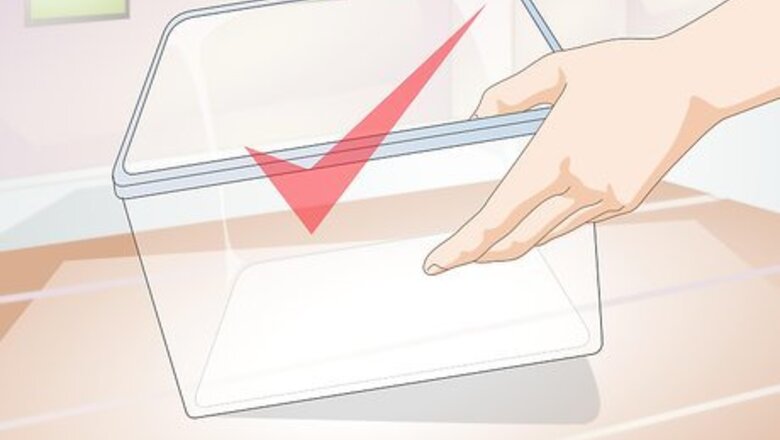
views
Setting up the Wax Worm Farm

Get a container. You will need a container made of hard plastic, metal, or glass. (Wax worms can chew through cardboard, wood, flimsy plastic, or paper.) Your container will need to be approximately 5-gallons in size.
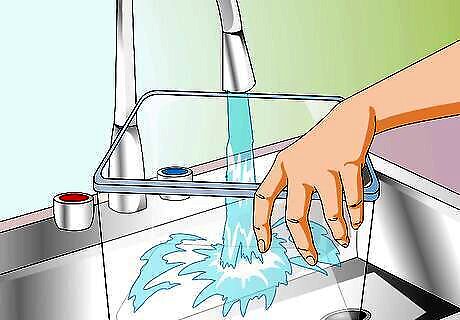
Wash the container. It is very important for your container to be free of any bacteria, chemicals, or other contaminants. Wash your container with warm water and a mild detergent, and then allow it to air dry.
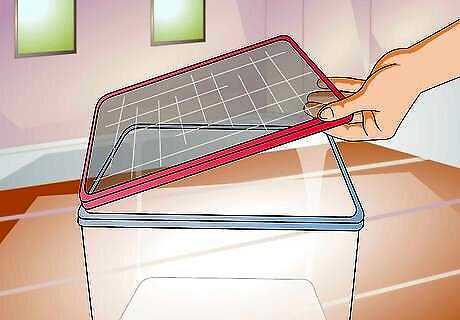
Create a mesh lid. Cover the opening of your container with a mesh screen. You will need to find something 20-gauge or smaller, so that your worms cannot escape through the openings. (You can find mesh like this at most hardware stores.) Eventually, you will secure this screen with duct tape.

Prepare worm food. You are going to need one box of mixed-grain baby cereal, 1/3 cup honey, and 1/3 cup glycerin. Mix these ingredients together (adding a bit of water, if mixture is too thick to stir). Then, place about half of this mixture at the bottom of your container. The other half can be refrigerated until needed.

Place wax paper in the container. Take a few pieces of food-grade wax paper and crumple them up. Then place your crumpled wax paper in the bottom of your container, along with the food. This will provide a place for your worms to lay their eggs.
Introducing Wax Worms to the Farm

Purchase wax worms. Look for a wax worm starter kit, containing 24-36 worms. These kits can be purchased from pet stores or bait shops. They usually come in starter packs by the dozens.
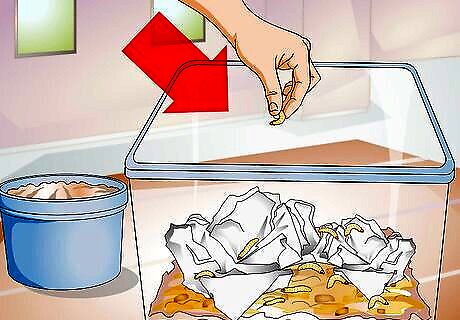
Place them in the prepared container. Open your container of worms and transfer them, one by one, into their new home. Discard any sawdust, they may be packed in. Your worm food (the cereal and honey mixture) and some crumpled wax paper should already be in place.
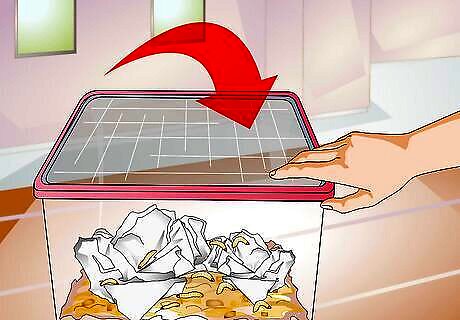
Secure your lid. Take your mesh screen lid and place it on top of your container. Then secure your lid by placing a bit of duct tape on each side. (You are going to remove this lid at times, so using 3-4 pieces of tape, evenly spaced, should work.) Once again, it is important to select a small enough mesh to prevent your worms from getting out.
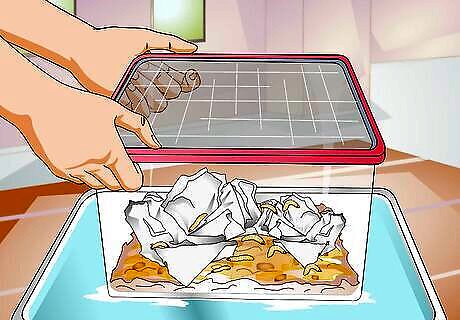
Place your container in water. If you are at all worried about your worms escaping their habitat and getting loose inside your home, you can set your container in a tray with about 1 inch of water. This will ensure that your worms cannot get loose. (This step is optional.)
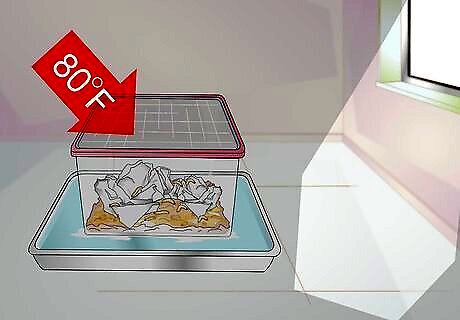
Place your worm farm in a warm, dark place. Wax worms are a good choice for home breeding because they are not terribly particular about temperature. They will survive in any temperature comfortable to you in your home. However, your wax worms will thrive most effectively in a dark place that runs about 80 degrees F.
Maintaining Your Farm
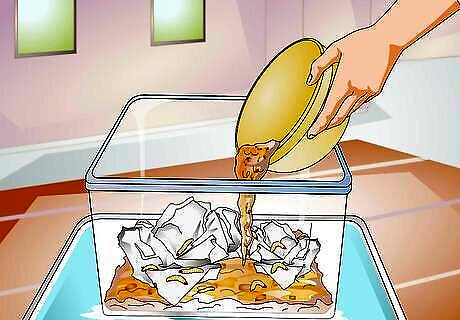
Add worm food as needed. Any time you see the worm food in your container getting low, you should add a bit more. As a general rule, you will want to add food to your container every two weeks, returning the food level to what you started with.
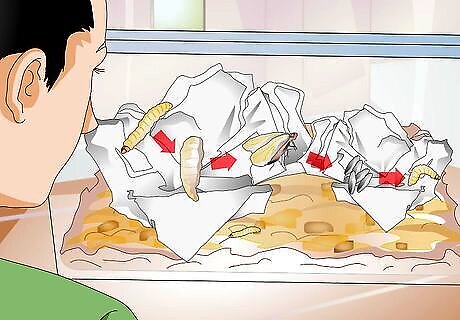
Watch your worms transform. Before long, you worms will pupate, transform into moths, breed, lay eggs, and die. This process will take anywhere from two to three weeks.

Remove dead moths. Wait until all of the moths have died, then carefully remove them from your container. It is important to wait until all of them have died before you begin the removal process, because this prevents any moths from getting loose inside your home.
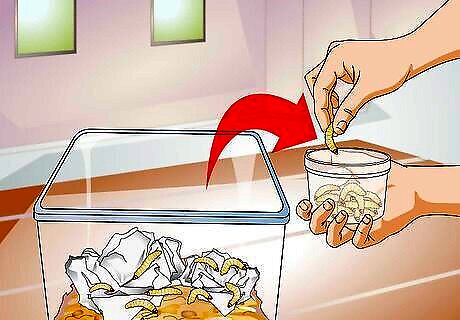
Harvest your worms. After about 8 weeks (from the time they hatch), your worms should be large enough to harvest. Carefully remove them from your farm container, and move them to smaller plastic containers (10-12 worms per container) with a small bit of wood chips or saw dust. You can store these smaller containers in your refrigerator for 2-3, or freezer for up to 4 months. If you'd like to grab a worm or two to feed your animal prior to your official harvest, go right ahead! Your worms may be small, but they will still be tasty! Reserve approximately 20 of your worms to breed for your next batch.

Begin again. After you have harvested your worms, clean out your container. Then use 20 or so of the harvested worms to begin the process all over again. Be sure to follow each step carefully.




















Comments
0 comment